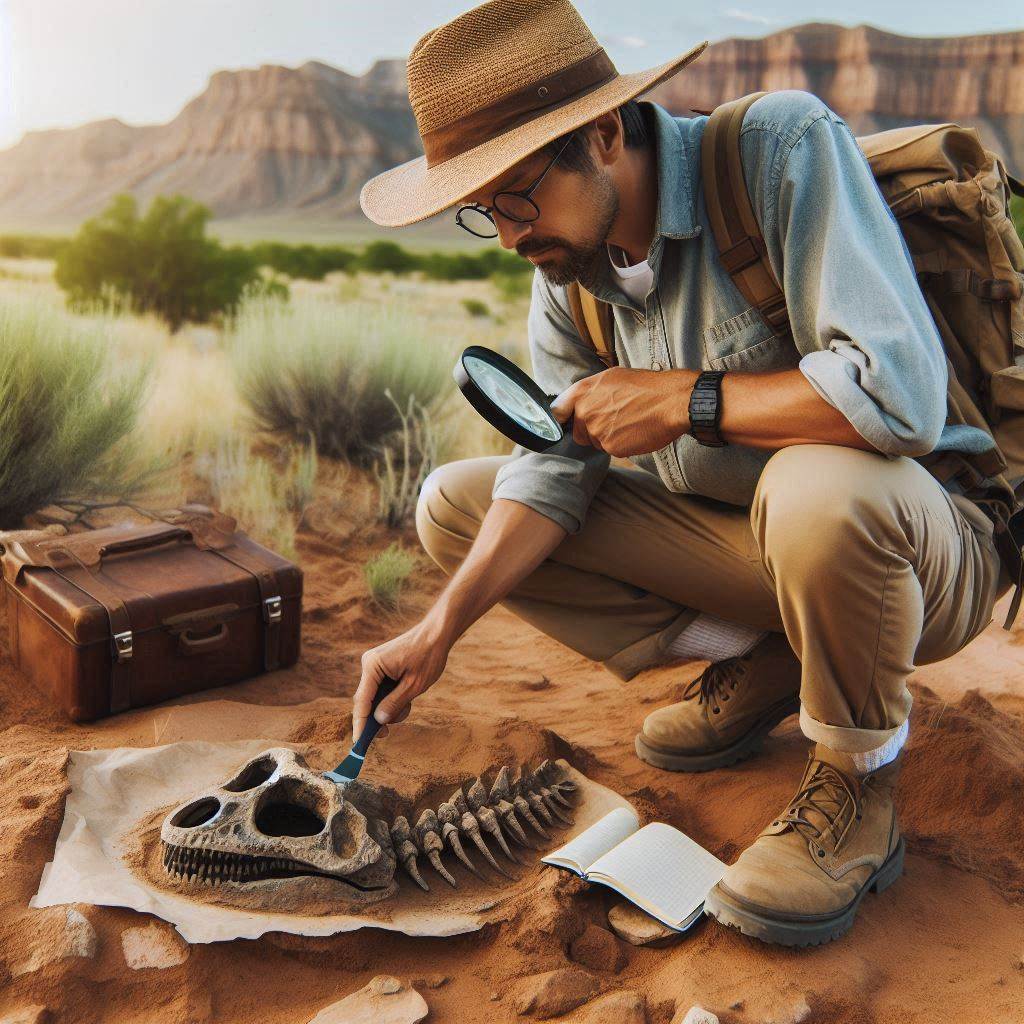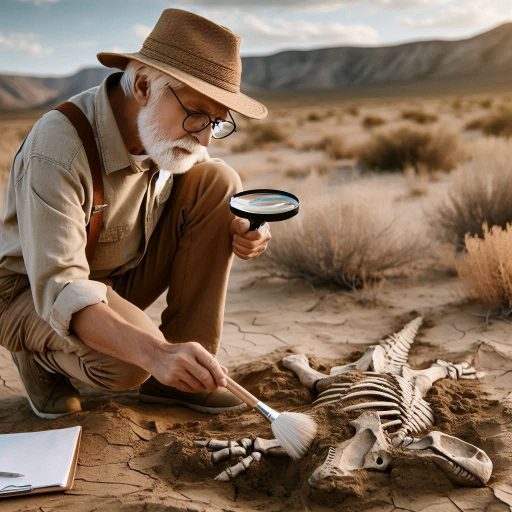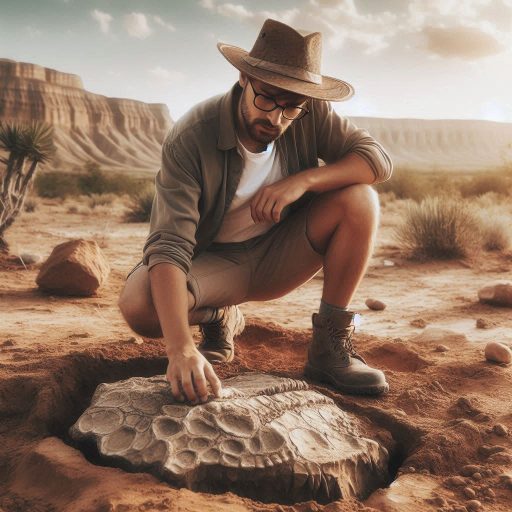Introduction
Funding and grants play a crucial role in advancing paleontological research.
Without adequate financial support, many important studies would not be possible.
Funding enables researchers to conduct fieldwork, analyze fossils, and publish their findings.
It also supports educational initiatives that engage the public in paleontology.
The importance of funding cannot be overstated.
It facilitates the development of new technologies and methods that enhance research quality.
With sufficient resources, paleontologists can explore remote locations and uncover significant fossil finds.
Funding also fosters collaboration between institutions, leading to groundbreaking discoveries.
Several sources provide funding for paleontological research.
Government agencies, such as the National Science Foundation (NSF), offer competitive grants for scientific studies.
Many universities and research institutions also allocate funds for their faculty’s research projects.
Private foundations, such as the National Geographic Society, support paleontological initiatives through grants and awards.
Additionally, nonprofit organizations often provide funding for specific research projects or educational programs.
Crowdfunding platforms have emerged as alternative funding sources, allowing individuals to support paleontological research directly.
securing funding is essential for advancing paleontological research.
By exploring various funding sources, researchers can pursue their studies and contribute to our understanding of Earth’s history.
Types of Funding
Types of Funding Options Available
Paleontological research relies heavily on funding and grants to support various projects.
Several funding options are available for researchers in this field.
Government grants, private foundations, and crowdfunding are three primary sources of financial support.
Government grants often come from agencies such as the National Science Foundation (NSF) or the National Park Service (NPS).
These grants typically support scientific research, including paleontology.
They offer substantial funding for long-term projects and collaborative research efforts.
Government grants often require researchers to demonstrate their project’s significance and broader impacts on science and education.
Private foundations also provide valuable funding for paleontological research.
Organizations like the Leakey Foundation and the Palaeontological Association offer grants specifically for paleontological studies.
These foundations often focus on specific areas of research, such as human evolution or conservation.
They typically fund smaller, innovative projects that may not receive government support.
Crowdfunding has gained popularity as a funding source for paleontological research.
Platforms like Kickstarter and GoFundMe allow researchers to present their projects to the public.
This approach enables individuals to contribute directly to research initiatives.
Crowdfunding can be particularly useful for smaller projects or community-based initiatives that engage the public.
Criteria for Each Type of Funding
Each funding option has its own criteria that researchers must meet.
Government grants often require a detailed proposal outlining the project’s objectives, methodology, and expected outcomes.
Researchers must demonstrate the project’s scientific merit and its contribution to broader societal issues.
Private foundations typically have specific focus areas for funding.
Applicants must align their projects with the foundation’s goals and objectives.
Researchers should provide a clear description of their proposed work and its potential impact on the field of paleontology.
Crowdfunding requires a compelling narrative to attract public interest.
Researchers must effectively communicate their project’s significance and engage potential backers.
Creating a captivating video or visual presentation can enhance the chances of success.
Setting achievable funding goals and offering rewards can also motivate contributions.
How Researchers Can Apply
Applying for government grants often involves multiple steps.
Researchers must first identify relevant grant opportunities and review application guidelines.
They should develop a comprehensive proposal that adheres to the funder’s requirements.
Collaborative projects often strengthen applications, so consider partnering with other researchers or institutions.
Private foundations usually have simpler application processes.
Researchers should thoroughly review the foundation’s guidelines and focus areas.
They may need to submit a letter of inquiry before submitting a full proposal.
This step allows applicants to gauge the foundation’s interest in their project.
For crowdfunding, researchers should prepare a clear and engaging campaign.
Craft a well-structured description of the project, including its goals and significance.
Utilize social media to promote the campaign and reach a wider audience.
Building a network of supporters can increase the chances of successful fundraising.
Essentially, funding and grants play a crucial role in supporting paleontological research.
Government grants, private foundations, and crowdfunding offer different funding options.
Researchers must understand the criteria for each type and tailor their applications accordingly.
By effectively communicating their project’s significance, paleontologists can secure the necessary funding to advance their research and contribute to our understanding of Earth’s history.
Government Grants
Overview of Government Grants for Paleontological Research
Government grants for paleontological research come from various sources.
These grants support research projects, fieldwork, and educational initiatives.
Funding can also cover fossil preparation and curation.
Government grants often aim to enhance scientific understanding and promote public education about paleontology.
Grants vary in size and scope, catering to different types of research.
Some grants focus on specific topics, such as biodiversity or climate change.
Others support broader research initiatives that explore various aspects of paleontology.
Funding opportunities may also arise from collaborative projects involving multiple disciplines.
Interdisciplinary research often attracts more funding due to its broader implications.
This approach can enhance the impact of paleontological research on other fields.
Government Agencies Providing Funding
Several government agencies provide funding specifically for paleontological research.
The National Science Foundation (NSF) is a primary source of funding.
NSF supports a wide range of scientific research, including paleontology, through its Division of Earth Sciences.
The U.S. Geological Survey (USGS) also offers grants for research related to geology and paleontology.
Their funding focuses on understanding Earth’s processes and the history of life.
Another important agency is the National Park Service (NPS).
NPS funds research projects related to paleontological resources in national parks.
Their funding helps preserve fossils and educate the public about paleontology.
The Smithsonian Institution provides grants for paleontological research as well.
These grants often support projects that enhance public knowledge and conservation efforts.
Application Process and Tips for Securing Government Grants
The application process for government grants involves several key steps.
First, researchers must identify suitable grant opportunities.
Thoroughly read the eligibility criteria and funding guidelines.
This ensures your project aligns with the agency’s goals.
Next, prepare a detailed research proposal.
Your proposal should clearly outline your research objectives, methods, and expected outcomes.
Be specific about how your project contributes to the field of paleontology.
Also, include a budget breakdown detailing how funds will be utilized.
Justify each expense to demonstrate careful planning.
Clear and concise budgets enhance your proposal’s credibility.
Seek feedback on your proposal before submission.
Collaborate with colleagues or mentors to refine your application.
Their insights can help improve clarity and strengthen your arguments.
Finally, pay attention to submission deadlines and required formats.
Ensure you submit all necessary documents on time.
Missing deadlines can jeopardize your chances of securing funding.
Funding and grants are essential for advancing paleontological research.
Government agencies like the NSF, USGS, NPS, and the Smithsonian provide valuable financial support.
Understanding the application process and preparing strong proposals can enhance your chances of securing grants.
By pursuing these funding opportunities, researchers can contribute to our understanding of Earth’s history and promote the importance of paleontology.
Read: Essential Skills and Tools for Modern Chemists in America
Private Foundations
The Role of Private Foundations in Funding Paleontological Research
Private foundations play a significant role in funding paleontological research.
They provide essential financial support for projects that may not receive government funding.
These foundations often focus on specific areas of research, such as fossil conservation, education, and public outreach.
Their contributions help advance our understanding of ancient life and Earth’s history.
Private foundations also promote innovative research initiatives.
They often support cutting-edge technologies and methods that can enhance paleontological studies.
By funding pilot projects, these foundations encourage researchers to explore new ideas and approaches.
This support is crucial for fostering creativity and collaboration within the field.
Moreover, private foundations help raise public awareness about paleontology.
Through grants, they enable educational programs and exhibits that engage the community.
This outreach fosters a greater appreciation for paleontological research and its importance in understanding our planet.
Prominent Foundations Supporting Paleontological Research
Several prominent foundations support paleontological research and education.
The National Geographic Society is one such foundation, funding numerous projects worldwide.
They focus on exploration, conservation, and education, supporting paleontological initiatives that align with these goals.
The American Museum of Natural History also provides grants for paleontological research.
They fund projects that contribute to their mission of advancing scientific knowledge.
Their support includes funding for fieldwork, laboratory analysis, and public education initiatives.
Another notable foundation is the Paleontological Society, which offers grants for research projects in paleontology.
They aim to support early-career scientists and encourage new contributions to the field.
Additionally, the Earthwatch Institute provides funding for field research projects, allowing volunteers to assist scientists in paleontological digs.
These foundations and others like them play a vital role in advancing paleontological research.
Their contributions enable researchers to conduct critical studies that deepen our understanding of ancient life.
Applying for Grants from Private Foundations
Researchers can apply for grants from private foundations through a structured process.
First, they should identify foundations that align with their research interests.
Each foundation has specific goals and funding priorities, so it’s essential to find a good match.
Once researchers identify suitable foundations, they should carefully read the application guidelines.
These guidelines typically outline the eligibility criteria, application requirements, and deadlines.
Following these instructions is crucial for a successful application.
Next, researchers need to develop a compelling proposal.
This proposal should clearly articulate the research goals, methodologies, and expected outcomes.
It should also demonstrate the project’s significance within the field of paleontology.
Collaboration can strengthen an application.
Researchers can consider partnering with institutions or experienced paleontologists to enhance their proposal.
This collaboration can provide additional expertise and resources, increasing the project’s chances of receiving funding.
After submitting the proposal, researchers must be prepared for follow-up communication.
Foundations may request additional information or clarifications during the review process.
Responding promptly and professionally can positively impact the outcome of the application.
Private foundations play a crucial role in funding paleontological research.
They support innovative projects and raise public awareness about the field.
By exploring prominent foundations and following the grant application process, researchers can secure funding for their important work in paleontology.
Read: The Role of Chemists in US Environmental and Sustainability Efforts
Crowdfunding
Understanding Crowdfunding for Paleontological Research
Crowdfunding is a way to gather funds from a large number of people.
This approach allows researchers to support their paleontological research projects.
It leverages online platforms to reach a broad audience interested in science and discovery.
Crowdfunding can provide the necessary financial resources for fieldwork, equipment, or lab analysis.
Researchers can create engaging campaigns that outline their projects.
They can share their passion and explain the significance of their work.
By connecting with potential supporters, researchers can foster a sense of community around their projects.
This support can lead to innovative research and public engagement in science.
Successful Crowdfunding Campaigns in Paleontology
Several successful crowdfunding campaigns have emerged in paleontology.
One notable example is the “Dino Chicken Project,” led by Dr. Jack Horner.
This campaign aimed to explore the genetic links between birds and dinosaurs.
It garnered significant public interest and successfully funded research to manipulate chicken embryos.
Another successful campaign involved the excavation of a dinosaur named “Dreadnoughtus”.
Researchers used crowdfunding to support their fieldwork in Patagonia.
They raised funds to excavate and study this massive dinosaur fossil, which provided valuable insights into its anatomy and ecology.
The “Fossil Record Project” also gained traction through crowdfunding.
This initiative sought to compile an extensive database of fossil finds.
The funds helped scientists create a comprehensive online resource for researchers and enthusiasts alike.
These examples demonstrate how crowdfunding can effectively support paleontological research.
Engaging narratives and clear objectives can attract a diverse range of supporters.
Tips for Launching a Crowdfunding Campaign
Researchers interested in launching a crowdfunding campaign should consider a few essential tips.
First, choose a compelling platform that caters to scientific projects.
Websites like Kickstarter, Indiegogo, or Experiment.
com specialize in supporting research initiatives.
Next, create a clear and engaging project description.
Explain the goals, significance, and potential impacts of your research.
Use visuals, such as images and videos, to enhance your campaign.
A captivating narrative can draw in potential backers.
Set realistic funding goals and offer appealing rewards for contributors.
Rewards can include exclusive updates, behind-the-scenes access, or even personalized thank-you notes.
Engaging backers through meaningful incentives fosters a sense of investment in your project.
Promote your campaign through social media and relevant communities.
Share your story on platforms like Twitter, Facebook, and Instagram to reach a wider audience.
Connecting with other researchers and organizations can amplify your message and attract more supporters.
Lastly, maintain regular communication with your backers.
Provide updates on your research progress and express gratitude for their support.
Building a community around your work encourages ongoing interest and potential future funding opportunities.
In fact, crowdfunding presents a viable option for supporting paleontological research.
By sharing compelling narratives and engaging with the public, researchers can secure necessary funding.
Successful campaigns in paleontology demonstrate the potential of this funding model.
With careful planning and promotion, researchers can launch effective crowdfunding initiatives to support their work.
Read: Day in the Life: An Environmental Scientist’s Typical Day

Challenges in Securing Funding
Common Challenges Researchers Face When Seeking Funding for Paleontological Research
Paleontological research often faces significant funding challenges.
Many researchers struggle to secure grants for their projects.
One major issue is the intense competition for limited funding opportunities.
Various scientific fields vie for the same financial resources, making it difficult for paleontologists to stand out.
Moreover, funding organizations typically prioritize projects with immediate societal impact.
Some grant agencies may view paleontology as less relevant compared to other sciences.
This perception can hinder researchers’ chances of securing necessary funds.
Additionally, many funding sources impose strict guidelines on eligible projects.
This can restrict the scope of research that paleontologists can pursue.
Issues such as Competition for Grants, Limited Funding Opportunities, and Grant Writing Skills
Competition for grants can be daunting.
Many researchers submit proposals, but only a small percentage receive funding.
Consequently, researchers must craft compelling proposals to capture the attention of reviewers.
Limited funding opportunities further complicate the landscape.
Many organizations provide grants specifically for paleontological research, but these are often scarce.
Researchers may need to explore alternative sources, such as private foundations or crowdfunding.
Additionally, grant writing skills play a crucial role in securing funding.
Many researchers lack formal training in writing grant proposals.
As a result, their submissions may fail to convey the significance of their research effectively.
Poorly written proposals can diminish chances of receiving financial support.
Advice on Overcoming These Challenges and Increasing Chances of Securing Funding
To overcome these challenges, researchers should start by developing strong grant writing skills.
Consider attending workshops or seeking mentorship from experienced grant writers.
These resources can provide valuable insights into crafting successful proposals.
Networking is another effective strategy for increasing funding opportunities.
Attend conferences and workshops to connect with other researchers and potential funding sources.
Building relationships with colleagues can lead to collaborative projects that enhance grant proposals.
Conduct thorough research to identify suitable funding opportunities.
Explore various organizations, including government agencies and private foundations.
Review their funding priorities to ensure alignment with your research objectives.
Tailor your proposals to address the specific interests of each funding agency.
Additionally, emphasizing the broader impacts of your research can enhance your chances of securing funds.
Highlight how your paleontological research contributes to our understanding of climate change, biodiversity, or conservation.
Demonstrating the relevance of your work can attract funding from agencies focused on these issues.
Consider seeking funding for pilot studies or preliminary research.
Smaller grants can help establish credibility and demonstrate the potential impact of your work.
Successfully funded pilot projects can lead to larger grants in the future.
Securing funding for paleontological research presents several challenges.
By improving grant writing skills, networking, and identifying suitable funding opportunities, researchers can enhance their chances of success.
Overcoming these obstacles is crucial for advancing paleontological research and our understanding of Earth’s history.
Read: The Impact of Technology on the Chemist Profession in the US
Transform Your Career Today
Unlock a personalized career strategy that drives real results. Get tailored advice and a roadmap designed just for you.
Start NowImpact of Funding on Research
The Impact of Funding on Paleontological Research
Funding significantly influences the progress of paleontological research.
It provides essential resources for fieldwork, laboratory analysis, and personnel support.
Without adequate funding, many research projects may remain unstarted or incomplete.
Limited financial resources can hinder the ability to explore critical fossil sites.
Consequently, many significant discoveries depend on the availability of grants and funding sources.
Grants enable researchers to purchase necessary equipment and supplies.
Advanced tools, such as microscopes and imaging devices, facilitate detailed analyses of fossils.
Additionally, funding allows scientists to hire skilled assistants and technicians.
This support enhances the overall efficiency and quality of research.
As a result, funding is vital for pushing the boundaries of our understanding of Earth’s history.
Specific Research Projects Made Possible Through Funding
Numerous specific research projects illustrate the impact of funding on paleontology.
One notable example is the Dinosaur Ecosystem Project in the Morrison Formation.
This project focuses on the late Jurassic period and aims to understand dinosaur diversity.
Grants from organizations like the National Science Foundation support this essential research.
Another significant project is the study of the Hell Creek Formation.
Funding has enabled researchers to explore this rich fossil site, leading to discoveries of new dinosaur species.
Recent excavations revealed a new species of theropod, enhancing our understanding of predatory dinosaurs.
These findings would not have been possible without the financial backing of grants.
Funding also supports collaborative efforts among institutions.
Joint projects between universities and museums often yield groundbreaking discoveries.
These partnerships allow for sharing resources and expertise, maximizing the impact of research efforts.
Collaborative projects frequently produce comprehensive studies, benefiting the entire field of paleontology.
Advancements in the Field and Discovery of New Species
Funding directly contributes to advancements in paleontology and the discovery of new dinosaur species.
Researchers use grants to conduct field expeditions in remote locations.
These explorations often lead to finding previously undiscovered fossils.
Every new discovery adds to the growing body of knowledge about Earth’s history.
In recent years, funding has facilitated the study of previously unexamined fossil collections.
Researchers analyze specimens housed in museums to identify new species or better understand existing ones.
This research often uncovers hidden biodiversity and evolutionary relationships.
Moreover, funding supports innovative research methods.
For instance, advancements in imaging technology allow scientists to study fossils non-destructively.
This technology reveals intricate details that were previously inaccessible, leading to new insights.
Such advancements often result in significant findings that change our understanding of dinosaur evolution.
To sum it up, funding and grants play a crucial role in the progress of paleontological research.
They enable essential projects that lead to the discovery of new species and advancements in the field.
Specific research initiatives illustrate the profound impact of financial support.
By facilitating exploration and innovation, funding ensures that paleontology continues to unveil the mysteries of Earth’s past.
As the field evolves, ongoing financial support remains vital for future discoveries and advancements.
Conclusion
Funding and grants play a crucial role in supporting paleontological research.
Researchers rely on financial resources to conduct fieldwork, analyze fossils, and publish their findings.
Grants can cover essential expenses, including travel, equipment, and laboratory analyses.
Without adequate funding, many important studies could remain unexplored or incomplete.
Various organizations, including government agencies, universities, and private foundations, offer grants specifically for paleontological research.
These opportunities can significantly enhance a researcher’s ability to conduct comprehensive studies.
Additionally, interdisciplinary projects often receive funding from multiple sources, promoting collaboration among scientists.
Researchers must actively explore and apply for these funding opportunities.
Each grant has specific requirements and application processes, so it’s vital to read guidelines carefully.
Networking with other researchers and attending conferences can also provide insights into available funding options.
Furthermore, maintaining a strong research proposal is essential for securing funding.
Clearly outline your research objectives, methodology, and potential impacts.
By effectively communicating the significance of your work, you increase your chances of receiving financial support.
Encouraging researchers to pursue these opportunities is vital for advancing paleontological studies.
With sufficient funding, scientists can make groundbreaking discoveries that enhance our understanding of Earth’s history.
[E-Books for Sale]
The Big Book of 500 High-Paying Jobs in America: Unlock Your Earning Potential
$19.99 • 500 High-Paying Jobs • 330 pages
Explore 500 high-paying jobs in America and learn how to boost your career, earn more, and achieve success!
See All 500 High-Paying Jobs of this E-Book
1001 Professions Without a Degree: High-Paying American Jobs You Can Start Now
$19.99 • 1001 Professions Without a Degree • 174 pages
Discover 1001 high-paying jobs without a degree! Unlock career tips, skills, and success strategies for just $19.99!




